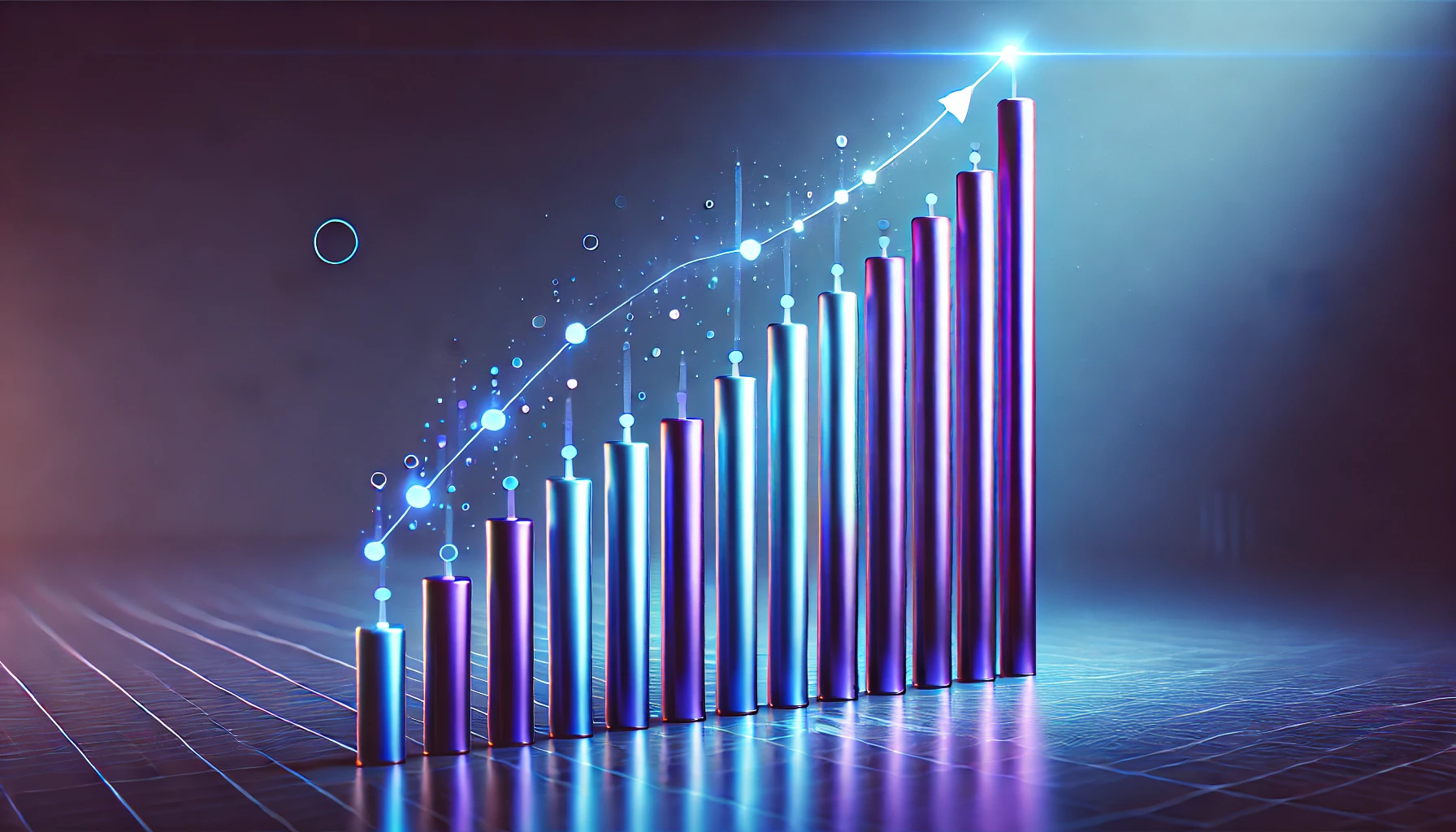Sales Funnel vs Sales Pipeline: Key Differences and How to Use Them

What’s the difference between a sales funnel and a sales pipeline?
Understanding the difference between a sales funnel and a sales pipeline can help you better know your audience and unattract, manage, and close deals. While they seem similar, each has its unique role in the sales process. Using the right term at the right time will keep your team on the same page.
Here’s a closer look at each one, how they differ, and how you use them.
What is a sales funnel?
A sales funnel is a model that shows the stages a customer goes through on their way to making a purchase. By monitoring how the funnel works, your sales team can nurture leads and track their behavior.
According to probably the most common model, the sales funnel includes these stages:
- Awareness: At this stage, potential customers are just becoming aware that something is wrong with their business or that it could be improved and start looking for a specific problem.
- Interest: Moving down the funnel, they start exploring the issue and potential solutions by researching and comparing. Here is where you need to catch the customer’s attention with your solution and present it as the best option.
- Consideration: Now, customers genuinely consider your product or service, checking out detailed product pages, reading reviews, and comparing you with competitors. However, leads still need more arguments to stick with you.
- Decision: This stage is about closely studying your solution’s benefits and cost. Leads iron out the last details and get hands-on with the product demo. They are close to making the final decision but might need extra reassurance.
- Purchase: This is where the transaction happens. It’s crucial to ensure a smooth buying experience to avoid friction, such as a complicated payment process.
This sales funnel framework is probably the most known and widely used, but feel free to explore alternative funnel models that might better suit your sales process. Here are a few options to consider.
AIDA (Awareness, Interest, Desire, and Action) model
According to the AIDA model, the top priority of the marketing and sales team is to make the lead aware of your product through various communication channels and then generate their interest with unique features or offers. Then, you turn leads’ “I want it” into “I need it” (desire) and finally drive actions (book a demo, download an ebook, etc.) to convert interest into a purchase.
AARRR (Acquisition, Activation, Retention, Referral, Revenue) model
The AARRR model (or “pirate metrics” framework) includes breaks down the stages in this way:
- Acquisition – attracting new leads through targeted channels
- Activation – engaging leads right away with a positive first experience
- Retention – encouraging leads to make repeat visits
- Referral – getting leads to start referring others
- Revenue – converting leads into paying customers
TOFU-MOFU-BOFU model
The TOFU-MOFU-BOFU model breaks the funnel into three specific parts:
- Top of the funnel (TOFU)
- Middle of the funnel (MOFU)
- Bottom of the funnel (BOFU)
TOFU is about capturing attention. MOFU nurtures and builds interest. And BOFU closes the deal with the final push toward purchase.
Understanding customer behavior throughout their journey is critical, no matter which model you choose. The funnel narrows as some leads lose interest in your product at different stages, giving you insights into when to engage, how to build trust, and how to better encourage leads to take the next step.
What is a sales pipeline?
A sales pipeline is a step-by-step map showing what a sales team does to move a lead from first contact all the way to becoming a customer. The sales pipeline focuses on sales team actions to make the customer journey happen.
The standard B2B pipeline covers these stages and actions:
- Prospecting – The team finds potential leads through outbound and inbound outreach strategies like calls, emails, marketing, and networking.
- Lead qualification – Sales reps sort out leads to prioritize those with the highest potential to convert.
- Needs assessment – Sales reps research specific requirements and challenges of qualified leads to connect the right dots and meet their needs.
- Proposal creation – A sales rep crafts a personalized proposal, showing the lead how the product or service can deliver value. Pricing, timelines, and terms are usually included, but the focus is on the benefits the solution can bring.
- Negotiation – The back-and-forth phase where reps work through any questions and issues to meet the lead’s expectations.
- Closing – The lead signs, sealing the deal, and converts into an official customer. But before the big moment, a sales agent ensures that all previous verbal communication and deal details are confirmed and documented.
- Implementation and onboarding – The sales team coordinates with support or customer success teams to provide a smooth onboarding and equip the customer with the best practices.
- Follow-up and support – Reps stay in touch with customers, offering support and spotting upsell opportunities.
Why the sales funnel and the sales pipeline aren’t the same
While both concepts are related, they’re more like cousins than siblings.
Here’s a side-by-side comparison.
| Sales funnel | Sales pipeline | |
| Focus | Customer journey | Sales team activities |
| Visual representation | Inverted triangle or funnel | Line or pipe |
| Metrics | Focus on conversion rates | Focus on deal progress |
| Perspective | Customer-centric | Sales-centric |
Now let’s take a closer look at each aspect.
Focus: Customer vs sales team activities
The sales funnel maps out the customer journey from the first interaction with your brand to the moment they make a purchase. Think of it as a way to understand the customer’s mindset and track when they’re likely to drop off or convert. In contrast, the sales pipeline focuses on sales team activities — the steps your reps take to engage, qualify, and close leads as they progress through different stages.
For example, while a customer might move through the “interest” stage of the funnel, the sales team in the pipeline is working on tasks like outreach and lead qualification to move that prospect forward.
Visual representation: Funnel vs linear stages
You can draw a sales funnel as an inverted triangle that narrows as leads move closer to becoming customers. This shape reflects the gradual filtering of leads, with many entering the funnel but only a few making it to the end.
The pipeline, on the other hand, is more linear — each stage represents a step in the process. Picture this as a clear path from “prospecting” to “closing,” where the deal is either progressing or stalling based on sales activity.
Metrics: Conversion rates vs deal progress
In the pipeline, metrics focus on deal progress through each stage. That means you can look at the pipeline right now and see if you have enough leads at each stage or if you need to put effort into particular ones to get better results.
For example, if you see hundreds of leads at the “need assessment” stage but only a few at the “proposal creation,” your team might need extra hands or sales automation tools to move between stages faster.
Meanwhile, metrics in a sales funnel often focus on conversion rates, measuring the overall percentage of leads moving from one stage to the next. They show the effectiveness of your marketing and lead nurturing efforts.
Perspective: Customer-centric vs sales-centric
The sales funnel provides a customer-centric view by focusing on the needs and actions of potential buyers. It shows how customers interact with content and where they might need more encouragement. The pipeline is sales-centric, helping the team manage and streamline their internal processes to close deals effectively.
So, as you can see, the sales funnel and the sales pipeline are two models with related but distinct objectives. The funnel guides you through the entire customer journey, while the pipeline focuses on managing each individual deal.
Still, their ultimate goal is the same: to turn leads into customers and work together perfectly.
Case in point: KlariVis, a cloud-based banking analytics platform, used Salesloft’s analytics and reporting to tap into real-time buyers’ behavior (funnel insights) to prioritize sales reps’ tasks and optimize the sales pipeline. As a result, KlariVis turned insights into actions that drive revenue.
You can achieve similar results in sales pipeline management — if you know how to create synergy between the two models when applying them to your sales strategy.
How to use both models to strengthen your sales strategy
These tips can help you integrate both models effectively, optimize your sales performance, and use customer insights to target sales actions.
Align funnel stages with pipeline stages
To avoid losing leads mid-funnel, match each funnel stage with a corresponding action in the pipeline. For instance, when a lead shows interest in your content (funnel stage), your sales team can start qualification activities (pipeline step).
Use funnel insights to guide pipeline actions
Funnel insights reveal where leads tend to exit, helping you improve your pipeline strategies. For example, if leads frequently drop off during the consideration stage, a lack of clarity or confidence in your solution might be the reason. Knowing this, you can fine-tune outreach efforts in the pipeline by providing guided product tours, offering Q&A sessions, or using other measures to demonstrate the product value.
Coordinate marketing and sales teams
A strong funnel-pipeline strategy relies on seamless collaboration between marketing and sales for good execution. Marketing can handle top-of-the-funnel (TOFU) tasks and copy creation, and sales can engage leads, encourage their action at the middle stages, and finalize deals.
For example, after generating leads through an educational webinar, the marketing team shares data such as the lead’s interaction history, specific topics, interests, and pain points. Then, the sales team picks up nurturing with personalized outreach: a tailored follow-up call addressing the lead’s interests or a demo covering specific features they clicked on.
Integrating a CRM or similar B2B sales tools for data sharing keeps both teams in sync, ensuring leads move smoothly through the funnel and pipeline.
Define clear metrics for each stage
Measure both funnel and pipeline performance by setting specific KPIs for each stage.
Some funnel metrics include:
- Lead acquisition rate
- Content engagement rate
- Lead conversion rate between stages
As for pipeline metrics, you might use:
- Number of deals in total and for each stage
- Deal velocity at every stage
- Average deal revenue at every stage
You can spot bottlenecks, optimize activities, and boost overall efficiency by setting these metrics and regularly collecting and analyzing data with sales automation software and analytics tools.
A/B test strategies across stages
Conduct A/B tests on different tactics at each stage to understand what resonates most with leads. Test varying outreach methods — personalized emails vs call follow-ups, or different CTA placements in the funnel. This approach will help you identify effective actions at each stage and refine both the funnel and the pipeline.
Gather feedback to fine-tune messaging and actions
Collect feedback from prospects at each stage through surveys, one-on-one conversations, or sales rep software notes. This input can reveal what prospects find compelling or confusing, allowing you to adjust messaging and pipeline activities accordingly.
Use AI to optimize sales pipeline tasks
AI tools can streamline several sales pipeline stages.
- AI for sales prospecting can find hundreds of leads that match your ideal customer profile in minutes.
- AI sales assistant software helps reps manage follow-ups, schedule meetings, and prioritize tasks.
- Some B2B software for sales also uses AI insights to track engagement and customer data, showing when a lead might be ready for the next stage.











